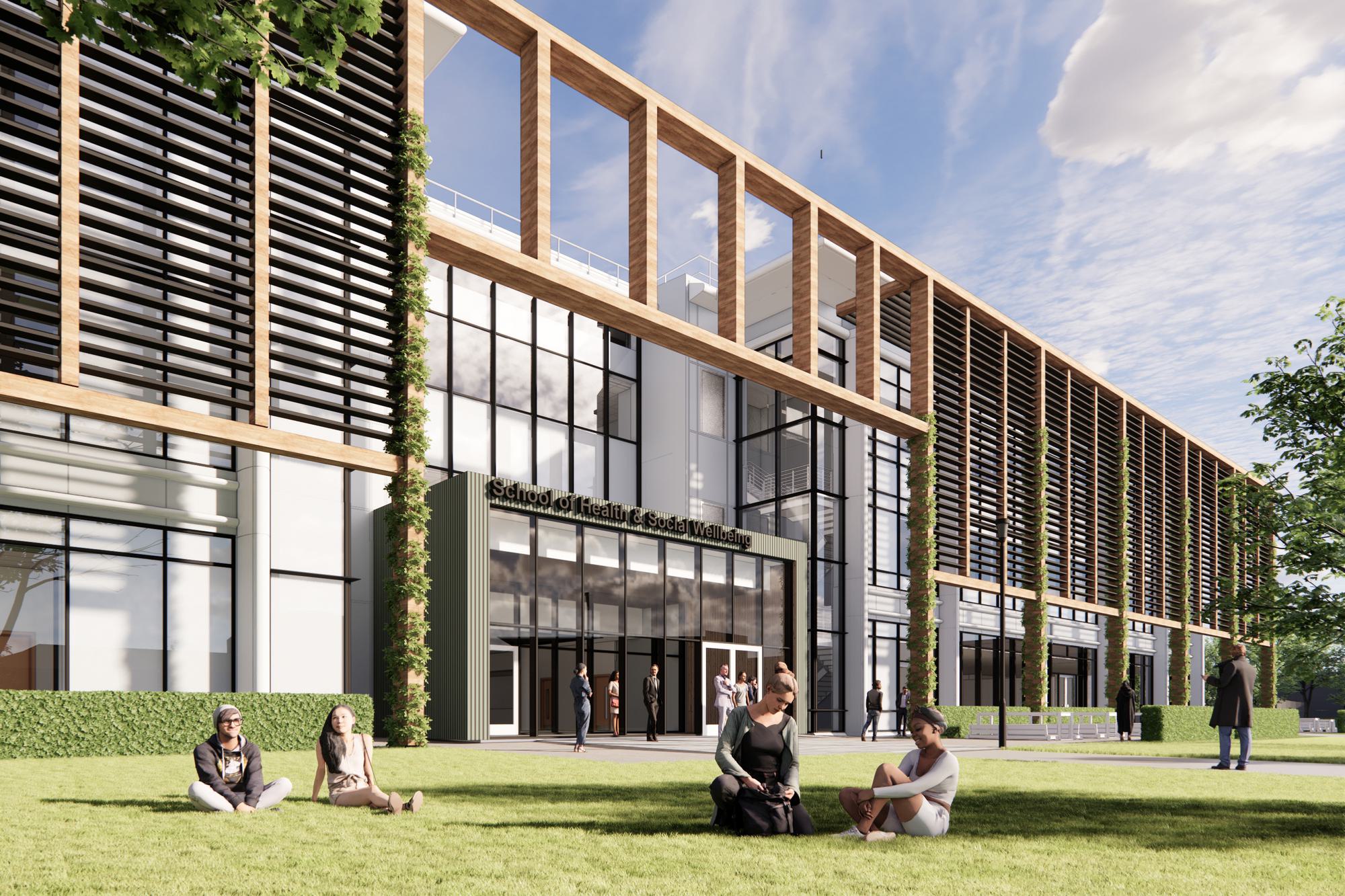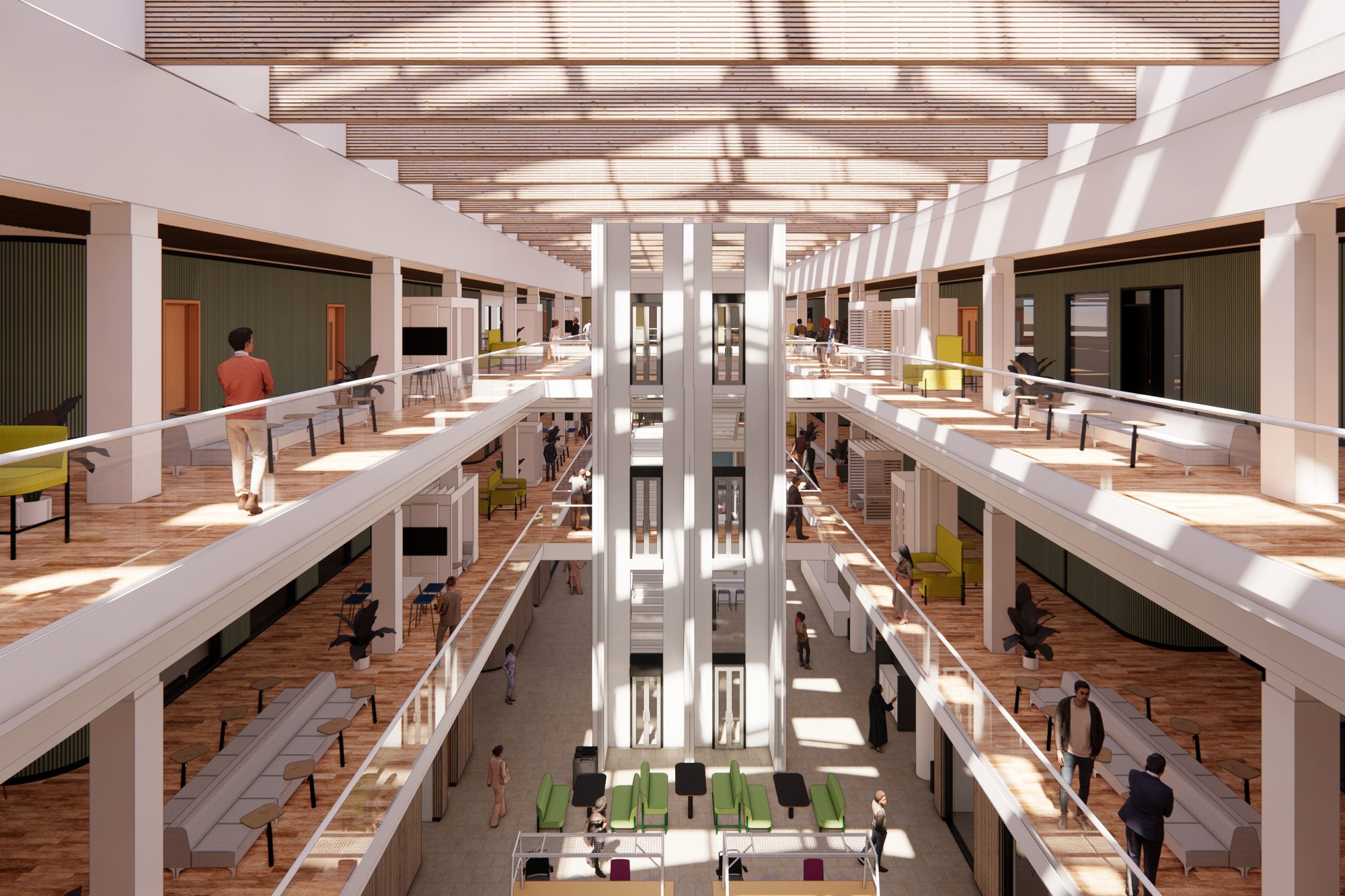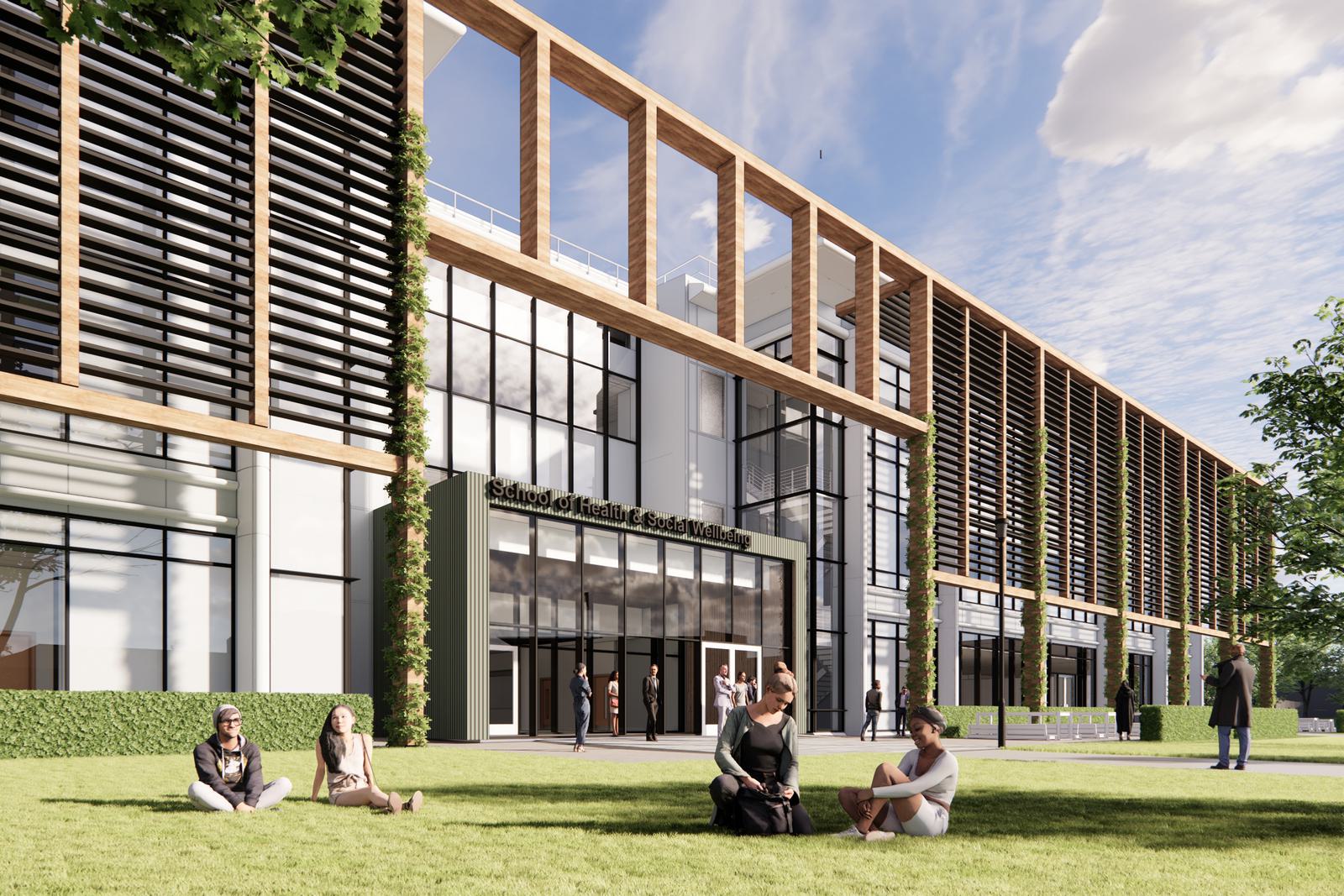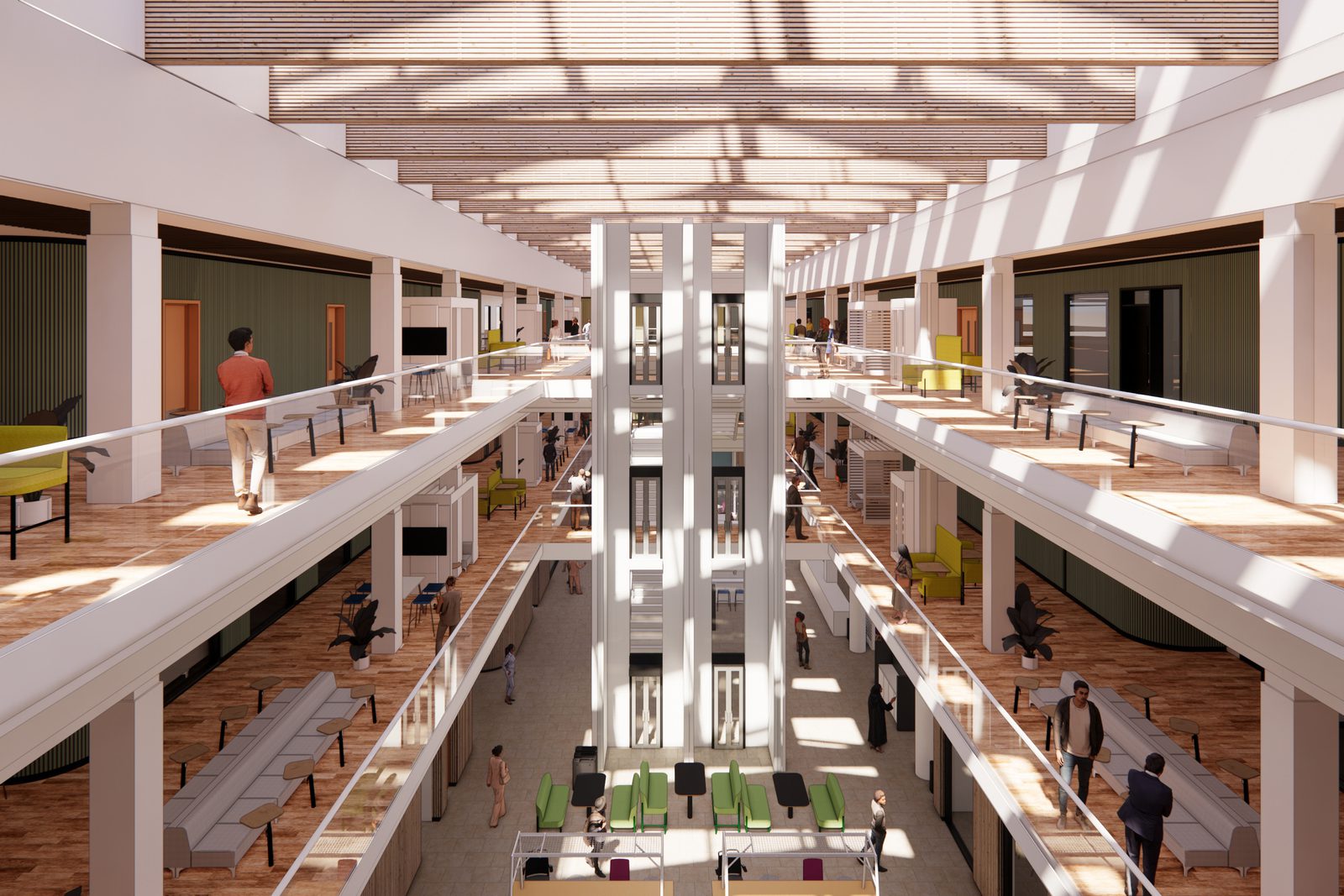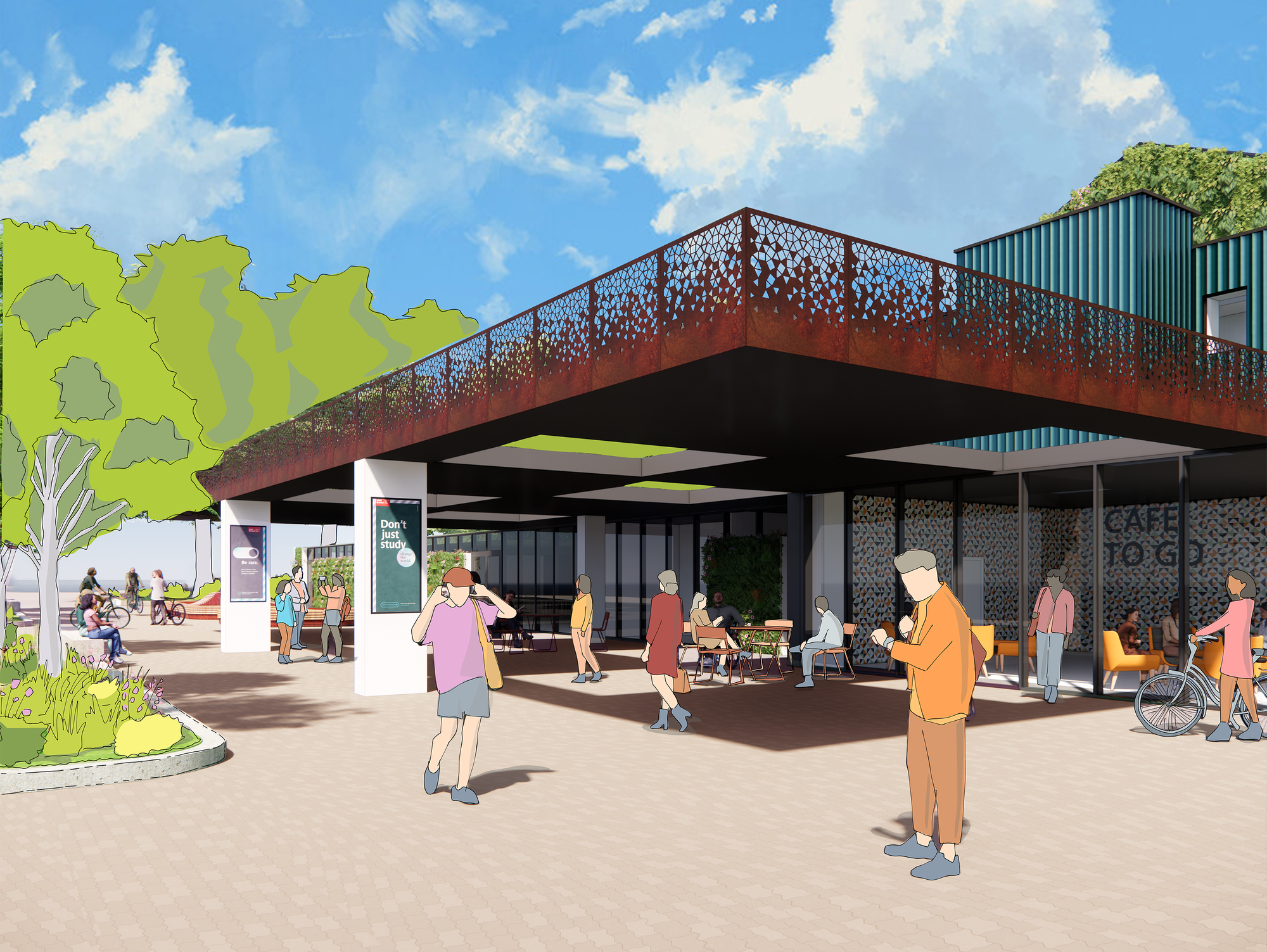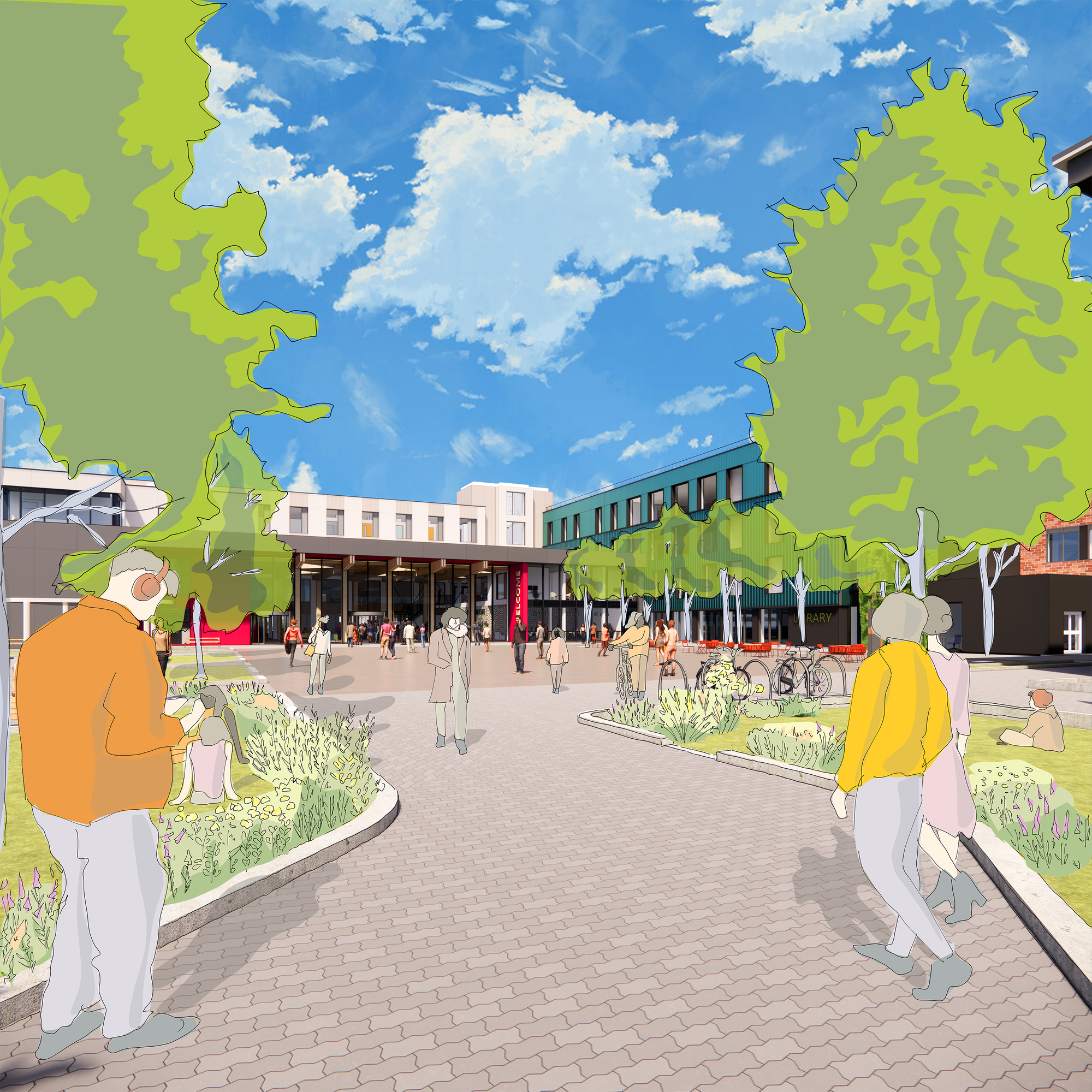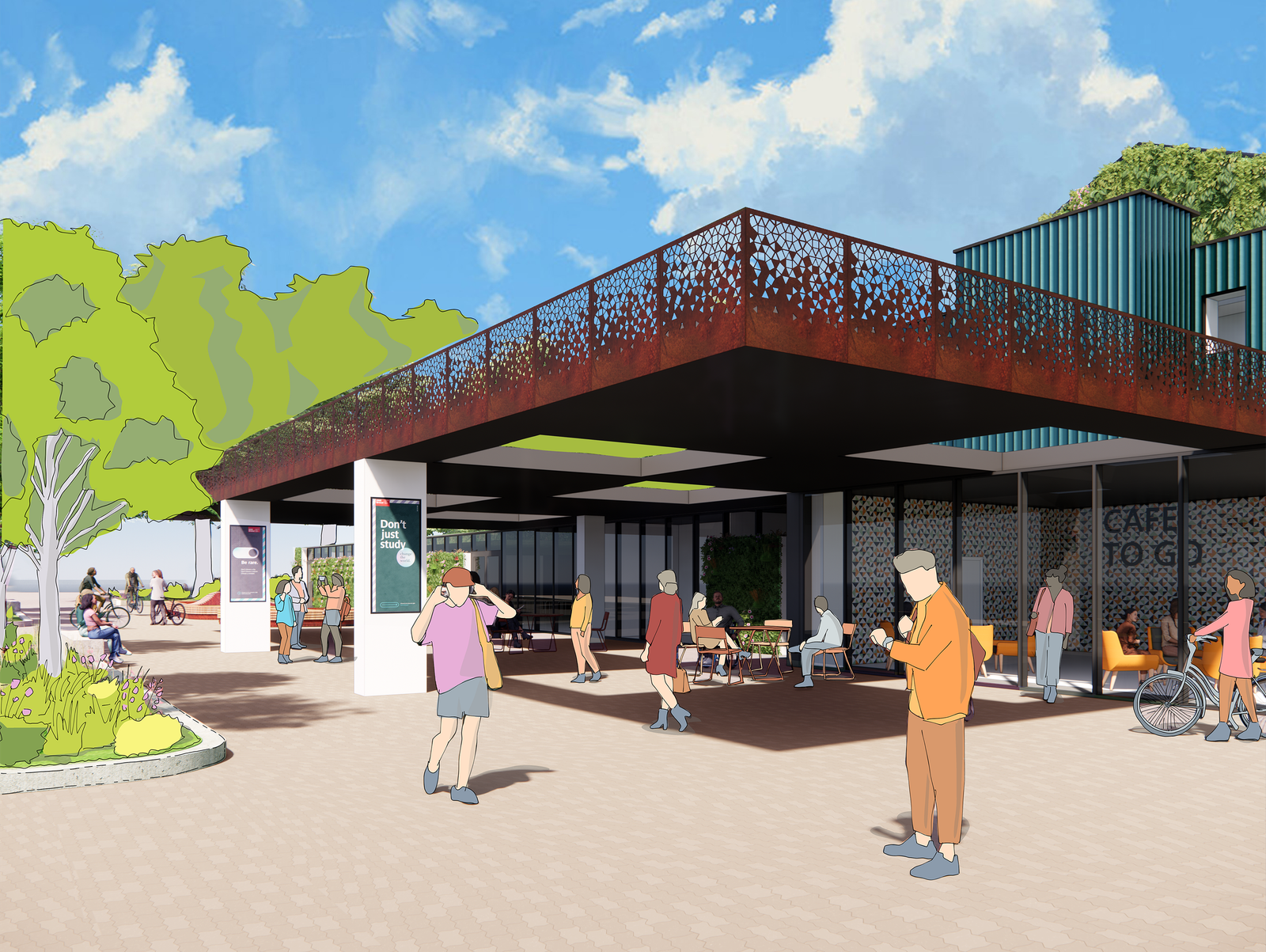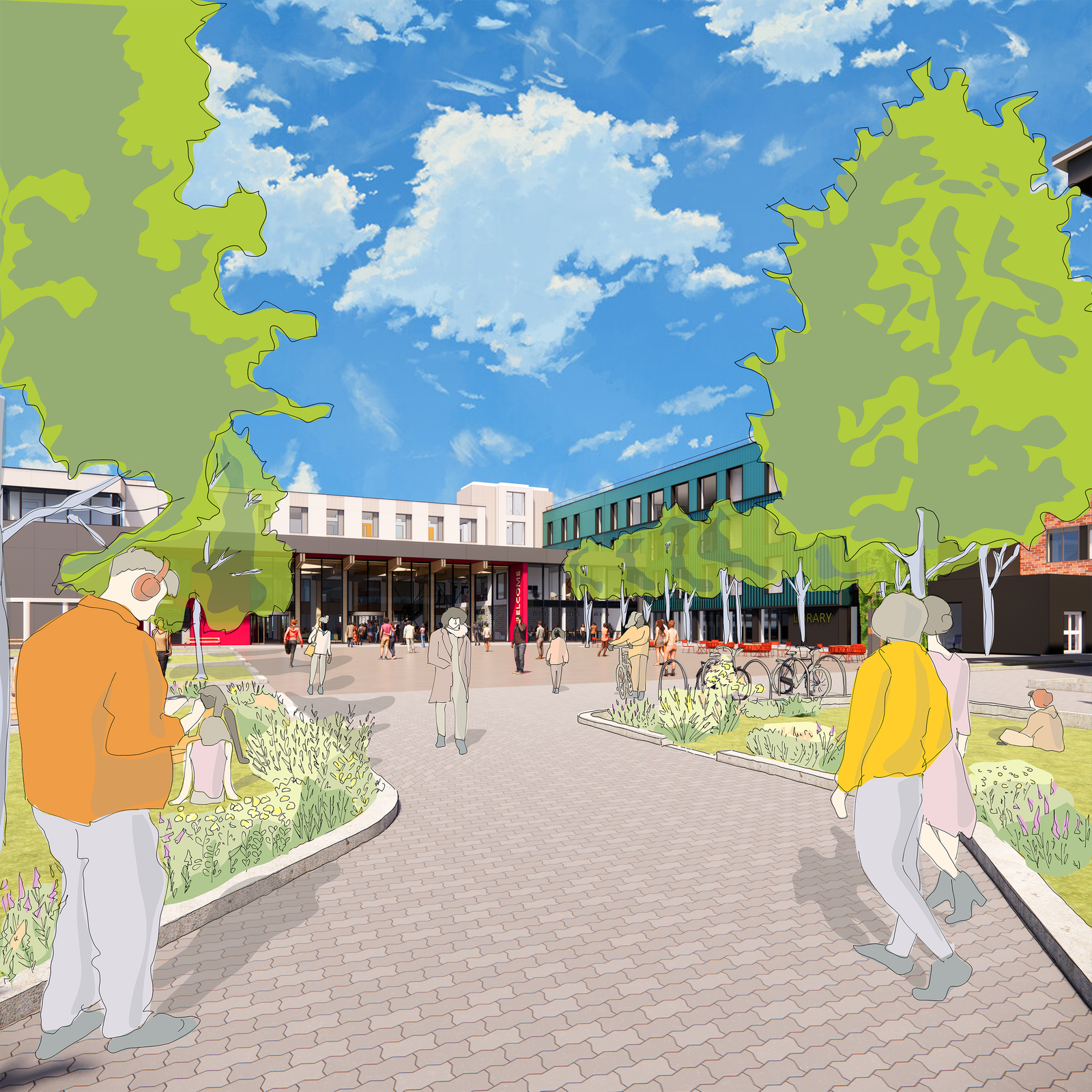Thought Leadership
Transforming university estates through retrofit-led design and decarbonisation
by AHR
Universities are increasingly focusing on retrofit as a key pathway to decarbonisation and optimising their estates.
Rather than building from scratch, many institutions are looking to maximise the value of existing assets by improving energy performance, user comfort, and long-term resilience. New construction still has its place, but retrofitting offers a more immediate, cost-effective route to achieving sustainability targets.
We partner with universities to translate retrofit ambition into practical, high-impact programmes. By combining strategic asset targeting with robust modelling, performance testing, and technical analysis, we deliver retrofit solutions that cut carbon, reduce costs, and improve long-term estate performance.
 Delivering retrofit solutions
Delivering retrofit solutionsWhy retrofit instead of new build?
New build developments remain a critical part of campus evolution, providing the opportunity to design high-performance spaces that support modern teaching, cutting-edge research, and evolving student needs. Purpose-built facilities are essential for growth, but they also present three key challenges:
- Embodied carbon and cost burden: New construction incurs high upfront carbon emissions, often taking decades of operational savings to offset.
- Long delivery timeframes: Planning, procurement, and delivery can extend over several years.
- Higher capital requirement: Higher capital requirements: Commercial refurbishments typically cost 60 to 68 percent of new build equivalents per square metre, meaning new construction can be nearly twice as expensive as a phased retrofit1.
Universities also benefit from improved estate continuity, as students and researchers experience fewer disruptions, and heritage or characterful buildings continue to contribute to campus identity.
Our work with the University of the West of England (UWE) is a strong example, refurbishing two former Hewlett Packard buildings on the Frenchay campus to relocate the School of Health and Social Wellbeing from its constrained Grade II-listed Glenside site.
The move creates modern, high-capacity teaching and learning spaces, supports the university’s long-term estate strategy, and enhances the student experience while preserving the value of the Glenside campus.
project experience
Delivering high-impact retrofit projects
To achieve meaningful performance gains, retrofit must be approached as a portfolio strategy that combines deep fabric upgrades, low-carbon systems, and rigorous modelling throughout.
Fabric-first upgrades
Improving thermal performance through insulation, airtightness, high-performance glazing, and ventilation remains central. For universities, these fabric-first interventions are among the most effective routes to reducing operational energy use and long-term costs.
UK Green Building Council analysis of commercial buildings shows that combining operational optimisation with targeted fabric upgrades can reduce energy use by around 26 percent when starting with the most cost-effective measures2. More ambitious retrofit strategies, such as the Entopia Building project in Cambridge, are projected to achieve up to 80 percent whole-life carbon reductions compared to standard refurbishment approaches3.
These gains depend on detailed building performance modelling and targeted thermal surveys. Best practice involves:
- Base build simulation calibrated to actual thermal performance
- Retrofit scenario modelling, including insulation, airtightness, and HVAC adjustments
- Cost-benefit analysis of projected energy savings compared to capital investment
We work with universities to interpret this analysis and help shape retrofit strategies that are informed by robust building performance data, supporting decision-making and decarbonisation programmes.
Our Retrofit Toolkit is central to this process, combining detailed modelling, performance diagnostics and scenario testing to identify the most effective interventions.
By evaluating each building’s condition, energy performance and potential improvements, we help universities target measures that deliver the greatest carbon reductions and operational savings while supporting long-term estate goals.
 Supporting universities' long-term estate goals
Supporting universities' long-term estate goalsLow-carbon systems and futureproofing
Fabric interventions create a tighter thermal envelope, but efficient, low-carbon servicing is essential to realise full value. University estates benefit from integrating:
- Heat pump-ready systems suitable for retrofit replacement
- Smart building management systems for real-time monitoring and control
- On-site renewables and storage to support resilience
When combined effectively, HVAC upgrades and smart building controls can significantly reduce energy consumption while maintaining or improving indoor environmental quality.
These interventions are particularly well suited to university settings, where lecture theatres, offices, and research spaces require consistent comfort and reliable performance.
By adopting carefully configured, low-carbon systems, universities can achieve substantial energy savings and long-term benefits as part of their wider decarbonisation plans.
Proven impact – from quick wins to deep transformation
The scale of potential benefits is best demonstrated through real-life data. Using our Retrofit Toolkit, we worked with the University of Liverpool on the Life Science Building to model the impact of two distinct approaches:
Quick-win scenarios: Light retrofit
Targeted measures such as improving airtightness, adding internal wall insulation and upgrading roof insulation deliver:
- EUI (Energy Use Intensity) reduction: 37% (saving 97.6 kWh/m².yr) – around 439,000 kWh/year
- Annual cost saving: £149,000 (based on £0.34/kWh)
- Operational carbon reduction: 19 kg CO₂/m².yr
Full transformation: Deep retrofit
A more extensive programme including window replacement, external wall insulation and comprehensive roof upgrades delivers:
- EUI reduction: 60–65% (saving 106.9 kWh/m².yr) – around 480,000 kWh/year
- Annual cost saving: £163,000
- Operational carbon reduction: 21 kg CO₂/m².yr
- Achieves an EUI of 57 kWh/m².yr, within reach of LETI’s Net Zero Carbon benchmark without relying solely on renewables
These results demonstrate how a data-led, fabric-first approach can make a measurable difference. Whether seeking rapid efficiencies or a complete step-change in performance, we can help universities unlock the full potential of their estates – achieving sustainability goals while improving long-term value and usability.
EnerPHit and near-zero retrofit
For universities aiming to go even further, EnerPHit-level retrofits apply Passivhaus principles to existing buildings. Combining high-performance fabric upgrades, efficient servicing, and smart controls, these deep retrofits strategies can significantly improve EPC performance in commercial buildings.
According to UKGBC’s Building the case for net zero: retrofitting office buildings, deep retrofit packages (involving envelope upgrades, HVAC replacement, renewables, and controls) can reduce EUI by up to 74 percent in office-style buildings. Taking some of the worst performing buildings from EPC G to A4.
We have been working with the University of West England to incorporate the EnerPHit standard into several blocks that form part of their redevelopment of the Frenchay Campus.
Positioning retrofit within estate strategy
Retrofit works best when fully integrated into an estate’s long-term development strategy. Rather than seeing it as isolated building upgrades, universities can approach retrofit as part of wider estate optimisation.
Key considerations include:
- Use performance data to prioritise buildings with high energy use, critical functions, or upcoming renewal needs.
- Group buildings that can share infrastructure or services to enable more coordinated and efficient retrofit programmes.
- Focus investment by reallocating budgets from underperforming or surplus assets.
- Sequence fabric, servicing, and smart system upgrades to ensure efficient delivery and align with funding cycles.
This approach allows universities to develop retrofit programmes that are coherent, phased, and aligned with broader estate management objectives. It helps avoid isolated, short-term upgrades that could complicate future decarbonisation steps.
A framework for educating estates teams
Universities that successfully deliver retrofit at scale often take a structured but flexible approach, embedding learning and repeatable steps within their estates teams. Best practice typically involves:
- Starting with a detailed pre-retrofit audit and fabric survey to build an accurate picture of the building’s condition and performance
- Using energy modelling to establish a reliable baseline and explore how different retrofit options could perform
- Carefully assessing potential interventions across the building fabric, servicing systems, and renewable technologies
- Comparing scenarios through cost-benefit analysis to prioritise the most effective investments
- Developing detailed designs that reflect the chosen retrofit pathway
- Commissioning and verifying works to ensure that predicted energy and carbon savings are achieved
- Continuing to monitor buildings in use, fine-tuning systems to maintain long-term performance
This practical, step-by-step approach gives estates teams the clarity and confidence to deliver retrofit programmes that are measurable, achievable, and aligned with wider estate objectives.
Why work with a specialist partner
Specialist partners can bring added value by providing:
- Confidence in technical decisions, supported by robust modelling and detailed building analysis
- A joined-up approach, helping to align retrofit design, delivery, and performance monitoring
- Clarity around practical delivery, with proven processes that reduce risk and support quality outcomes
- Insight and shared learning, drawing on experience from similar university retrofit projects
We work closely with estates teams, providing clear advice, practical tools, and sector knowledge to help shape effective, long-term retrofit strategies. Our role is to support decision-making and to strengthen in-house capability, creating tailored solutions that work for each university’s unique estate.
Retrofit as a strategic solution
Retrofitting university estates is a strategic solution that helps institutions meet their decarbonisation, operational and financial goals. When planned and delivered as a data-led, fabric-first programme, retrofit can provide:
- Operational energy reductions of up to 80 percent
- Strong return on investment, with many measures achieving payback within typical budget cycles
- Lower upfront costs than new construction, with reduced campus disruption
- Long-term asset value and future regulatory compliance
Retrofit also enhances the social and environmental credentials of universities, enabling existing buildings to continue supporting vibrant, sustainable campuses.
We support estates teams in delivering retrofit strategies that are robust, commercially viable, and aligned with institutional priorities. Using our Retrofit Toolkit, we target investment where it achieves the greatest impact – cutting carbon, reducing energy use, and creating high-performing spaces that stand the test of time.
If you’re ready to move towards net zero, we can show you where to start and how to deliver lasting results. Get in touch.
Posted on:
Aug 26th 2025
Topics:
Share on
Related Articles

Thought Leadership
How trauma-informed design is shaping more inclusive spaces
In this piece, we explore what trauma-informed design means in practice and how it is shaping a more inclusive future for the built environment.
Date: 25 Jul 25
by AHR

Practice News
Achieving decarbonisation: Circularity and smarter energy use in the built environment
As the built environment navigates a rapidly evolving climate landscape, the drive to decarbonise is becoming both more urgent and more complex.
Date: 22 Jul 25
by AHR

Thought Leadership
Optimising university estates to enhance the student experience
As competition among universities intensifies, the role of the campus estate in shaping student experience has never been more important.
Date: 15 Jul 25
by AHR

Thought Leadership
People first: Designing for community and identity
We explore the social dimension of placemaking and how inclusive design, meaningful engagement and cultural identity contribute to environments that are enriching and enduring.
Date: 7 Jul 25
